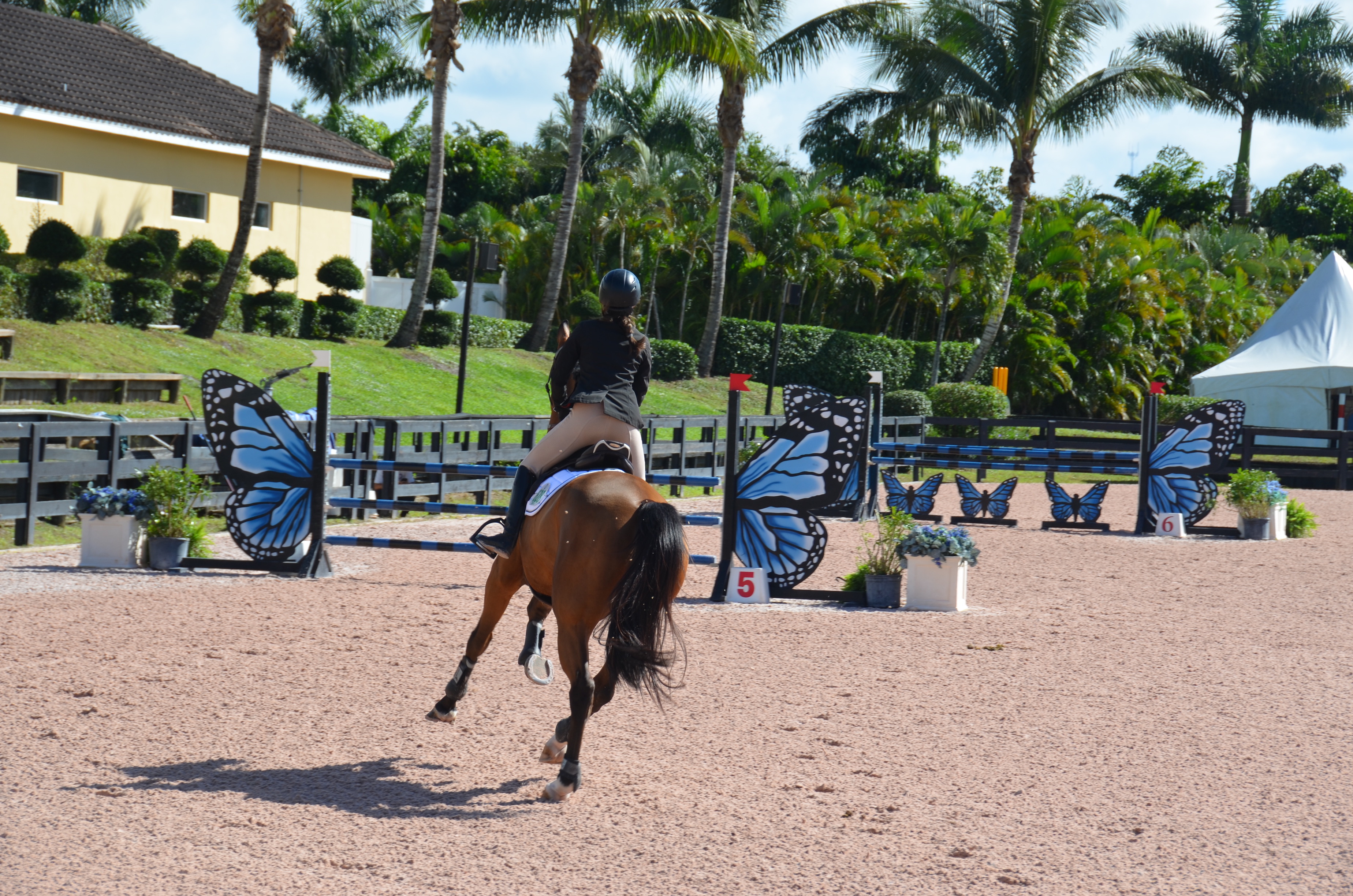
Flying into Palm Beach International Airport during the winter months you often come across equestrians headed to Wellington, FL to compete, but it wasn’t until recently that I truly began to understand the importance of this town 35 minutes inland from Palm Beach Island. Home to the International Polo Club, Palm Beach residents have been long familiar with Wellington for the lavish polo matches which have attracted high profile competitors like Prince Charles and Price Harry and heiress Georgina Bloomberg who offered her barn to shelter local horses during a recent hurricane. The polo scene, along with international competitions in dressage and showjumping, makes Wellington the top destination internationally for equestrians with a yearly influx of 50,000 horses just during the winter season. And how do those international horses get to Wellington? They fly! Talk about an expensive plane ticket.

USEF Senior “S” judge, Lisa El-Ramey, gave me a behind the scenes tour of the competition grounds and town just before the start of the 2018 season. She is the owner of Wellington Insider Tours, which operates weekly tours giving outsiders a peek into this fabulous equestrian destination where barns (not homes) start at $4 million. Here’s what you need to know:
Q: How did Wellington become such an important place in the equestrian world?
A: Wellington was really just kind of an agricultural community that not a lot of people lived in, but with the proximity to Palm Beach, the polo guys were the ones come here and built the International Polo Center. That was the beginning as the guys who were attracted to polo and their wives had horses, so it made perfect sense to come to Florida in winter. There are different competitions happening daily in season so it’s basically one long-running event 4 month event. Nothing exists like this anywhere else in the world– it’s unique to the horse world.
Q: What will guests see on Wellington Insider Tours?
DRESSAGE:
Dressage is a sport based on the French word for training. In the early times, it was a methodology of training horses for war, basically, and over time that evolved as horses were no longer really a part of the war machine. As people had more expendable income in the aristocracy, they trained horses for show. There is a prescribed test that each horse has to perform. At the highest levels, i.e. competing to ride in the Olympics or the World Equestrian Games, they can qualify to go onto the special or the freestyle events. The freestyles are set to music. Much like figure skating there are elements they must include, but there is no pattern in which they must include them. The costume is very traditional including a stock tie. A properly worn stock tie is essentially a long strip of material meant to be a bandage if you were out riding through the woods and got injured. So there was a tradition behind doing it –it’s steeped in tradition. Every generation puts a little twist on it.

SHOWJUMPING:
The showjumping is Saturday night under the lights. You will see jumpers here from all over Europe, from many of the South American countries, Canada, and the US all vying for their teams. It doesn’t matter where you are competing internationally because as long as you are at an international event, your points count toward making the team in your country. There are no age restrictions on the teams, but there are junior levels as well. The horses are highly sought after, and campaigning a horse to these levels is incredibly expensive. At an international tent for showjumping people pay upwards of $80,000/table for 10 weeks of the jumping competition: breakfast and lunch 5 days a week, and dinner certain nights in addition to all you can drink. Showjumping encompasses the hunter and jumper classes. The main difference between the two is that hunters are “judged”. Jumpers are mainly focused on time and clean rounds, meaning no rails down or refusals. The hunter is a style of jumping where the horse is judged on its form over the fences and the quality of its canter pace and demeanor on the course.

POLO
The International Polo Club hosts a decadent all-you-can-eat champagne brunch during Sunday matches, an experience in itself. With sponsored areas by Veuve Cliquot and Lilly Pulitzer, this Palm Beach scene often ends up in the Palm Beach society pages. Here are the basics: Each rider on a team has at least 4 horses, usually more which they will rotate through the game. Each period of play is called a chukker. With 6 chukkers in a game and 4 guys on a team, you can have upwards of 50 horses on a string and possibly multiple strings of horses.

Wellington Insider Tours is now booking for the 2018 season which runs through April. https://wellingtoninsidertours.com/





